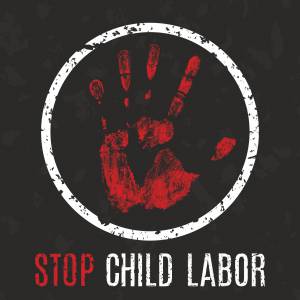Celebrate Recovery on September 30
In order to celebrate recovery, we need to understand that it is not an easy road.
One of the most debilitating diseases in the world is addiction. It’s estimated that about 4.5 million Canadians suffer from drug addiction, and this figure doesn’t include family members affected by addiction. Fortunately, there is treatment available, but addiction is not curable. Those who have conquered their addiction are considered recovered, not cured. It’s important to realize that many people go on to live productive and healthy lives once they stop using the addictive substance. Since 2012, there’s been a push to celebrate recovery from addictions.
In the United States, September is designated Recovery Month, but here in Canada, we just have Recovery Day. Last year, about 30 cities held special events, and this year, even more will. Recovery Day began with a nine-minute video by filmmaker Greg Williams that had the goal of breaking down the stigma of addiction and focusing on solutions to addiction. The movement began in Vancouver but has trickled across the country to help others.
Myths About Addiction and Treatment
Many times, addicts are seen as bad people making bad decisions, but drug and alcohol addiction is much more complex than we realize. There’s no “one size fits all” to cure addiction. Often, addictions come hand-in-hand with other mental health problems, such as anxiety or depression, and all of the health problems within a person have to be dealt with to find long-term recovery. Here are a few other myths associated with treatment and addiction:
- Addiction is a character flaw.
Addiction is actually a brain disease.
- People can just stop using drugs if they want to.
Drug and alcohol addiction actually changes the brain, which leads to a compulsion to use the substance. Teens become addicted much more quickly than adults because their brains are not fully developed.
- You can’t force a person into treatment for it to be successful.
Many people go into treatment to keep a job or because the legal system ordered them into it.
- Treatment should be a one-shot deal.
Studies show that treatment reduces many of the risky behaviors associated with addiction and it reduces the substance use, but many addicts need continuous treatment to overcome drug and alcohol use. There are some who can quit cold turkey and never go back to using the substance again, but many others need a wide array of services to keep them on the road to recovery. Treatment needs to be individually tailored to address each person’s specific needs.
- After treatment, if a person continues to abuse drugs or alcohol, it’s a hopeless situation.
Relapse into substance abuse is not failure. Addiction is a chronic disorder that makes a person more vulnerable when dealing with work and family problems. Stress can trigger a relapse, especially in the first few months following a release from a treatment program. Don’t give up on an addict, because recovery is a long process that isn’t easy.
A Day to Celebrate Recovery Gives Hope
When people come together to share their recovery stories, it’s proof that treatment does work. Recovery is possible. The awareness Recovery Day brings challenges the societal stigma of addiction, and it builds community to give hope to others who are dealing with this difficult problem.
Recoverydaycanada.com has information about events in different cities. Vancouver is hosting a street festival. Montreal hosted an event at Girouard Park on September 17.
If you miss out on the event in your community, make plans to celebrate with your friends who are in recovery to honor their commitment to their health. Find inspiration and support in what they’re doing to maintain sobriety. Give hope to others who may have friends and family dealing with addiction. Let’s focus on solutions and finding help instead of shaming addicts.
Save
Get Ready to Participate in World Suicide Prevention Day
We have the ability to stop others from attempting suicide. We need to reach out to others and lend a helping hand to those who desperately need it.
This past spring, Canada experienced a crisis of suicides in its aboriginal population. In one northern Ontario community, more than 125 individuals attempted suicide in about a six-month time frame. Considering that the community itself only has a population of about 2,000, that figure is alarming. The suicide rate for First Nations males is 10 times higher than that of non-indigenous males. For women, the rate is 21 times higher. The government has responded by sending more healthcare providers to the area, and according to news reports, the Red Cross has gotten involved. Parliament held an emergency session last spring to address some of the problems, but it’s going to take time to change the statistics.
Suicide Prevention Tips
The World Health Organization knows that there is a suicide epidemic in the world. WHO estimates that one person dies every 40 seconds every year by suicide. That’s about 800,000 people around the world. This figure does not include those who do not succeed, which could be another 25 times more people. Nor does this figure calculate how many people are affected by suicide each year. It’s not just those who die or try to die, it’s those who love this person. In September, WHO wants to get the message across that suicide is preventable. It takes just three simple steps:
- Connect
- Communicate
- Care
One key element that researchers have found in preventing suicide is relationship. Those who are contemplating suicide often feel distant from those they love and they need the connections and communication for full recovery. It’s not easy to talk about suicide and it can be extremely scary. Many people avoid the conversation, because it can be so awkward. There’s also a myth that by talking about it, you actually encourage those who are thinking about it to actually do it. Many high schools don’t teach “Romeo and Juliet” just for that reason, but research hasn’t really show a connection.
When talking to someone about suicide, it’s important to listen and to show compassion without being judgmental, which can be a very difficult assignment as well. Here are some things you can say and questions you can ask:
- I have been concerned about you lately.
- How can I support you?
- I’m here for you. You’re not alone.
- I may not understand how you feel, but I love you and I want to help.
- I want to check in with you to see how you’re doing.
- Have you thought about finding professional help?
If you need some ideas on what not to do:
- Don’t say things like “look on the bright side” or “suicide will only hurt your family” or “suicide is wrong.”
- You don’t need to fix their problems or even give advice.
- Don’t blame yourself.
- Don’t promise to keep their secret.
Responding to a Crisis
When a person tells you that they’re thinking about suicide, even though you might be a layperson, you should evaluate the immediate danger. You can do this through asking them about their suicide plan. When someone has a specific plan, the means to carry out their plan, and a time, you should probably get help immediately. You don’t have to take care of this situation on your own, no matter what the other person wants. A life is a stake. You should never leave a suicidal person alone when an attempt seems imminent. You should also remove potentially lethal objects from the area as well.
Join International Association for Suicide Prevention on social media for ways to get involved in World Suicide Prevention Day on September 10. Know what’s going on in your community to prevent suicide and to find assistance quickly. There are many resources available across the country. Suicide is preventable when you know how to act.
Save
World Day Against Child Labour
Child Brides, Child Trafficking and Child Slavery are at an alarming rate.
Child brides and marriages have been in the news lately. In Canada, the age of consent is 18 or 19 in most jurisdictions, but with parental or court permission, an individual as young as 16 can get married. The situation is much similar in the U.S., although a few states do have laws to allow individuals as young as 13 to get married. In those cases, court and parental consent are required. Internationally, child brides are considered a bigger problem, largely due to the fact that these young girls have no say in their fate. Girls around the world do not have the same protections that girls in North America do. The United Nations hopes to change that.
No to Child Labour; Yes to Education
One of the most basic rights for each individual is education. It’s just as important as health, food, safety and shelter. Some countries do not educate their girls or only provide education to a certain age. The International Labour Organization estimates that about 168 million children around the world work instead of going to school or playing. About 120 million of these children are aged 5–14. Many of these children work full-time in deplorable and hazardous conditions. Some have been forced into the workforce because of human trafficking or slavery.
In 1919, the ILO was born, mostly out of the need to end child labour around the world. The ILO has actually been making progress. The goal was to end child labour by 2016, but there’s still work to be done. The ILO actually recognizes the importance of social dialogue in the fight to end child labour in production and manufacturing.
Awareness in the Present
The 2016 World Day to End Child Labour is on June 12. The focus this year is to end child labour in supply chains. A supply chain is the sequence of activities that leads to distribution or the production of goods. Stereotypically, most people think of children sewing clothes, but child labourers work in many other industries, from fishing to mining.
The ILO recommends effective governance as one of the keystones against child labour. Individually, there’s even more that can be done. Here are some recommendations:
- Get educated. The Institute for Humane Education is one place to get started. The ILO has a number of resources as well.
- Buy fair trade products. There are a number of labels, Fair Trade Certified, Goodweave and Fairtrade Mark.
- Talk to retailers about where they are buying their products. Ask them to make sure they are using responsible suppliers and distributors. You have the right to ask about the origin of the product you’re buying. You may need to dig deep and go to the manufacturer to get information.
- If you are a stakeholder in a business, make sure your organization is supporting businesses that don’t use child labour.
- Talk about the social injustices with others who can make a difference in their own circles.
Making a Difference
Don’t think that your small business won’t make a difference by buying responsibly. In India, the tent dealers association stopped 80 child marriages in Rajasthan, India by simply asking to see the birth certificates of the brides and grooms before renting a tent for their wedding. By coming together and making a stand, these businesses are changing their country.
Join the campaign to stop child labour. On June 12, the UN and ILO have arranged a number of activities in countries around the world. Ask your government officials to start thinking about next year and what you can do in your community to make a difference for children everywhere. The little girl next door to you may not have to worry about going to work, but in many countries, there are little girls and boys who are.
Being Prepared on Your Wedding Day
Be ready for the wedding day.
Even if you have a wedding planner, things can and do go wrong on the big day. For a lot of problems, the coordinator of the venue will have contingency plans in place. You just have to roll with the punches and let them handle things. In fact, you may not even know about the issues that came up with the caterer or another supplier. That’s why you have a planner. What you should be prepared for are little things that happen while you and your attendants are getting ready.
Pack an Emergency Kit
When you’re the bride and groom, people are going to look to you when there’s a problem. Each of you need a bag packed with items to fix hems, fight bad breath, and manage small emergencies. Here are some recommendations:
- Pain reliever (aspirin, ibuprofen, and/or acetaminophen)
- Mouthwash, toothbrushes, and toothpaste
- Razor and shaving cream
- Breath mints
- Safety pins
- Small sewing kit with black and white thread
- Deodorant
- Hair spray, gel, comb, and hair pins
- First aid kit
- Antacid
- Sunscreen and aloe vera (for outdoor weddings)
- Stain remover
- Umbrella or emergency rain coats
Although you don’t necessarily have to be the one to pack these items, you need to know that you have supplies at the ready. Maybe ask one of the groomsmen or bridesmaids to handle your list. Think about your venue and the types of things which easily get overlooked.
Make Lists Before the Wedding
It seems obvious that you should make lists, so the question is, What type of lists? Both the bride and groom should have contact information for the attendants, families, and minister. It’s easy to think, “Oh, these numbers will be in the phone,” but phones get misplaced in the hustle and bustle of the day. If more than one person has the information, it’s easier to get to and creates less stress. Create your picture list for the photographer and put someone in charge of helping to make sure you get all the shots you want.
Create your tip envelopes for people who need to be tipped. Have some extra cash on hand for people who you may have forgotten about or who go beyond what you expect. Have an itinerary to help keep you on a timeline. On the actual day of the wedding, put someone in charge of the schedule to watch the timing and ensure everyone is where they need to be. Although everyone is looking to you and your future spouse, you cannot be everywhere at once managing all the small details. You’re going to have to give up some control, but that’s okay. Every one of your family members and friends who are helping you wants the same thing: your wedding to be what you imagined.
Don’t Get so Wrapped Up in the Details and Forget to Enjoy Your Day
Every bride and groom wants their wedding day to be perfect. It’s easy to get caught up in the minutiae and forget to see the big picture. If your flower girl is upset because she hates her shoes, let her wear something more comfortable or go barefoot. Take time to eat during the day. It’s okay to take care of yourself, even if it seems as if there are a hundred things you need to do. Having an empty stomach will amplify every problem.
This special day will never be repeated. You can aim for perfection, but sometimes it’s the imperfections that make the memories. Someday, you both can smile when you look back at the pictures and talk about having to pin Uncle Tom’s pants because they were too big and remember that Uncle Larry said his pants were a bit too tight.






